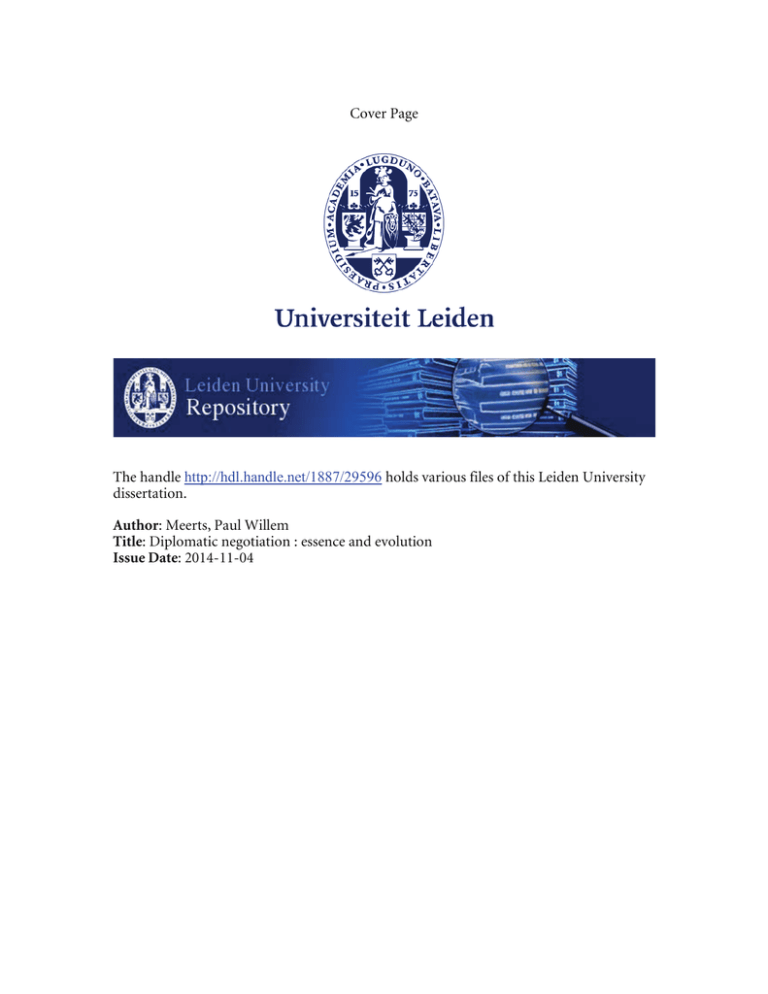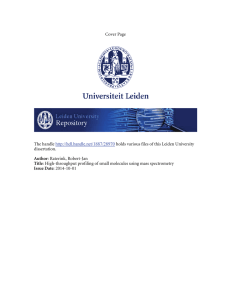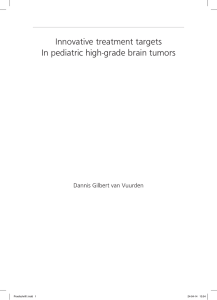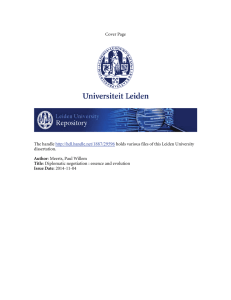
Cover Page
The handle http://hdl.handle.net/1887/29596 holds various files of this Leiden University
dissertation.
Author: Meerts, Paul Willem
Title: Diplomatic negotiation : essence and evolution
Issue Date: 2014-11-04
Diplomatic Negotiation
Diplomatic Negotiation
Essence and Evolution
PROEFSCHRIFT
ter verkrijging van
de graad van Doctor aan de Universiteit Leiden,
op gezag van Rector magnificus prof. mr C.J.J.M. Stolker,
volgens het besluit van het College voor Promoties
te verdedigen op dinsdag 4 november 2014
klokke 16.15 uur
door
Paul Willem Meerts
geboren te ’s-Gravenhage
in 1946
Promotiecommissie:
Promotores:
Prof. dr. A. van Staden
Prof. dr. I.W. Zartman (Johns Hopkins University, Washington D.C., USA)
Overige leden:
Prof. dr. N.M. Blokker
Prof. dr. M.O. Hosli
Prof. dr. J. Melissen (University of Antwerp, Belgium)
Prof. dr. N.J. Schrijver
Cover photo: bpk Photo Agency / Erich Salomon; source: De Vries and Hunter, 1963
Layout: Textcetera, Den Haag
Print: Gildeprint, Enschede
ISBN 978-94-610-8781-2
NUR 805
Copyright: P.W. Meerts / Clingendael Institute, The Hague 2014
pmeerts@clingendael.nl
All rights reserved. No part of this publication may be reproduced, translated, stored in a retrieval
system of any nature, or transmitted, in any form or by any means, electronically, mechanically, by
photocopying, microfilming, recording, or otherwise, without prior permission from the author.
Dedication: To my ancestors, who negotiated for survival.
Table of Contents
Preface11
Chapter I: Introduction and Disquisition
The Architecture of International Negotiation
Academics and Practitioners
Parties and Interests
Process and Power
Bashing or Bargaining
Approaches to International Negotiation
Approaches from ‘International Negotiation’
Approaches from Other Sources
In Conclusion
17
21
22
24
27
29
31
32
37
42
PART ONE: THE NATURE OF DIPLOMATIC NEGOTIATION
45
Chapter II: Aspects of Diplomatic Negotiation
The Development of Diplomatic Negotiation
The Problem of Establishing Outcomes
Changes over the Centuries
Characteristics of Diplomatic Negotiation
Conflict of Interest and Power Relationships
Inter-state Negotiations
The Diplomat and Negotiation Behaviour
In Conclusion
47
50
53
55
57
59
61
63
65
Chapter III: Process and Context
67
Boundaries in Bargaining
71
Geography: Bargaining Borders
72
Systems as Boundaries in Bargaining Processes
74
Needs: the role of interests and positions
75
Resources: Human, Immaterial and Material
76
Regulators: Law, Procedures, and Diplomatic Norms and Values
77
The Time Factor
79
Order through Organization
80
Regimes80
Regimes and Negotiations
82
Shifts in Multilateralism
84
Coping with Challenges
85
Possible Future Developments
87
In Conclusion
88
8
Diplomatic Negotiation
Chapter IV: Entrapment in Negotiation
91
Characteristics: Choice, Uncertainty, Investment, Repetition94
Levels: Intrapersonal, Internpersonal, National, International101
Factors: Planning, Information, Communication, Control106
Case Study: Four Lessons110
In Conclusion
113
Chapter V: Negotiation and Warfare
115
The utility of War and Words
118
Historical Background
119
Commonalities121
Divergences125
Synergies127
Mediation130
In Conclusion
133
PART TWO: THE CONDUCT OF DIPLOMATIC NEGOTIATION
137
Chapter VI: The Seventeenth Century: Forward- and Backward-Looking
Outcomes139
Parties and Positions
143
Procedures and Processes
148
People and Posture
151
Prevention and Prospectiveness
157
In Conclusion
161
Chapter VII: The Eighteenth Century: Behaviour of Negotiators
163
What was it about?
165
The Political Context
167
Pre-negotiations169
Negotiations170
Negotiators172
Other Congresses on Dutch Soil
174
The Peace of Utrecht in a Broader Perspective
175
Past and Present: The Effective Negotiator
178
In Conclusion
180
Chapter VIII:The Nineteenth Century: Inclusiveness and Exclusiveness
183
Choice187
Context190
Counterparts193
Structure199
Conversations202
Convergence206
In Conclusion
212
Table of Contents
9
Chapter IX: The Twentieth Century: Reputation and ‘Egotiation’
Closure of the First World War
The Outer Ring
The Inner Ring
Opening and Closure of the Second World War
Munich, 1938
Yalta, 1945
During the Cold War
Vienna, 1961
Beijing and Moscow, 1972
Geneva, 1985
In Conclusion
217
222
223
224
228
229
232
234
234
236
239
240
Chapter X: The Twenty-First Century: Structure and Negotiation
Uniqueness and Strength of the Organization
The Role of the Negotiation Process
Characteristics of the EU as a Negotiations Arena
Member States in the EU Negotiation Process
Procedures of the EU Negotiation Process
Institutions in the EU Negotiation Process
EU Enlargement and External Negotiations
Strategies and Tactics in EU Negotiation Processes
The Future of the EU Negotiation Process
In Conclusion
243
246
247
249
252
254
254
261
263
265
268
Chapter XI: Simulating Diplomatic Negotiation
271
Unilateral Lessons for Chairing
274
Chairing in the European Union
276
Effective Chairing
278
Bilateral Lessons for Practice
281
The Nature of Negotiation in an OSI Context
283
Training for On-site Inspection Negotiations
287
CTBTO Table-Top Exercises: What Are They About?
289
CTBTO Table-Top Exercises: What Happened and Why?
291
Multilateral Lessons for Practice
295
Substance296
Rules of the game
298
Processes and Outcomes
300
Comparable Games
302
In Conclusion
303
Chapter XII: Summary and Conclusions
307
The Nature of Diplomatic Negotiation
311
The Conduct of Diplomatic Negotiation
315
Cross-Cutting Findings: Actors, Factors, Process, Control321
Recommendations328
10
Diplomatic Negotiation
Samenvatting331
Bibliography341
Glossary367
Acknowledgements371
Curriculum Vitae
375




